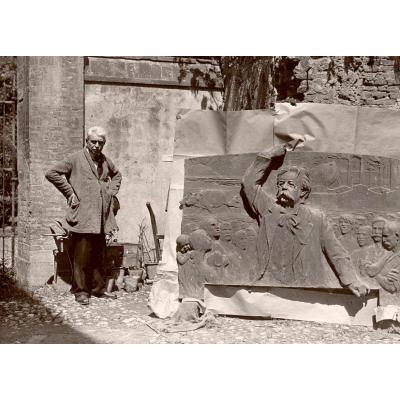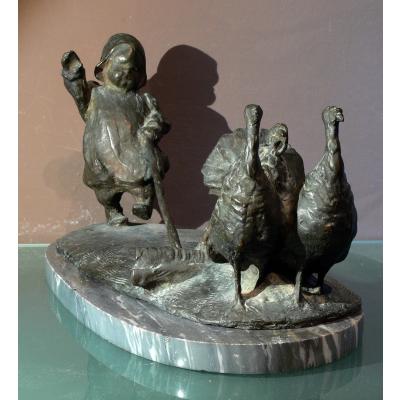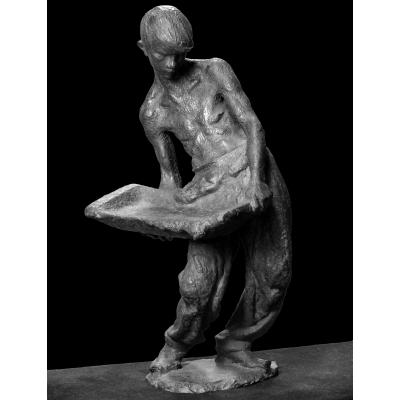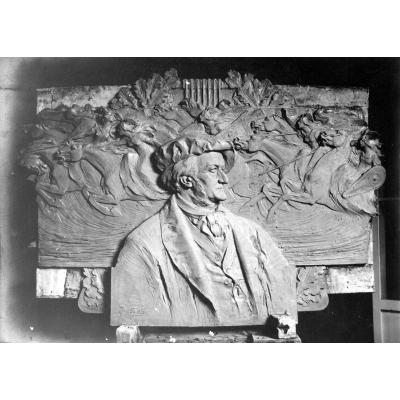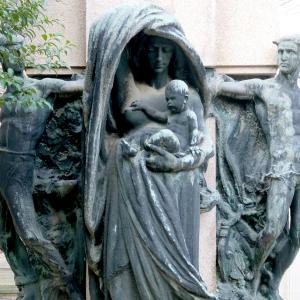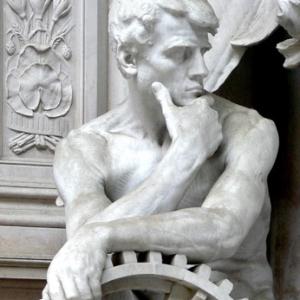Scheda
As a multifaceted artist, Silverio Montaguti (2 June 1870 -25 December 1947) studied at the Accademia di Belle Arti of Bologna following courses with Silvio Gordini and Enrico Barberi. Graduating in sculpture in 1897, he participated in numerous contests and won the Curlandese Award in 1903 with the bas- relief L’aratura.
A frequent visitor to the exhibits of the Association for Francesco Francia Arts, he won first prize twice in sculpture: in 1903 he won with the plaster caste Selcini which was the beginning of a series of works inspired by the humble lives of the working class, and in 1912 he won with Per la civilta e per la patria (for civilization and for the homeland) in the plastic group to commemorate the soldiers of the Lybian war. A wise and sensible interpretation of the reality of the time, he combines the hard realism of social themes with intimate solutions of liberty and symbolism. Representative of this artistic climax are of the two bronze reliefs in bronze with couples of flowers in 1910 for the fountains of the Erbe Market on via Ugo Bassi, currently located at Porta Galliera. One of Montaguti’s most known and effective works it combines a classic sense of modelling to describe the ironic tale enhanced by the mischevious water games and licentious attitudes of the figures. In November of 1913 the plaques of Richard Wagner and Giuseppe Verdi by Montaguti were placed in the atrium of the Teatro Comunale. In the conventional poses of the two busts, Montaguti opposes the modelization of the Liberty style by adding expressionistic accents in the background. This dramatic influence, primarily seen on Verdi’s bas-reliefs, are probably consequence of the sculptor’s conservative attention to how own city’s artistic heritage in 1914 with the beginning of the restoration of the Compianto sul Cristo morto by Niccolò dell’Arca. As a prominent figure in Bologna’s cultural scene in the first half of the 20th century, Montaguti was able to create a refined plastic synthesis in his works by constantly reworking 19th century realism with the different artistic languages of those years. An exact example of this are numerous privately commissioned works seen in the city’s cemetery where the essential nature of the medallion portray the exquistite and vigorous modeling of the Tombs of Napoli, Zamorani, Zironi and Rimini. This long series of bas-relief works of bronze is opened by The Maries at the tomb of Christ following in 1905 for the family of De Napoli where the compositional rigor of the 19th century brand, learned from the Barberi school, uniting elements with the new style of liberty symbolism. The relief placed on the 1911 Zamorani tomb is splendidly inserted in the typical Bolognese floral taste while the statue of the Dolore (Ache) of the Rimini Tomb demonstrates the artist’s adaptation of the 1920s decò language. A versatile, but unfortunately little appreciated artist, Montaguti was revealed as an original sculptor, a meticulous restorer and a respected teacher of not only academics.
Translation from italian language by Holly Bean.

